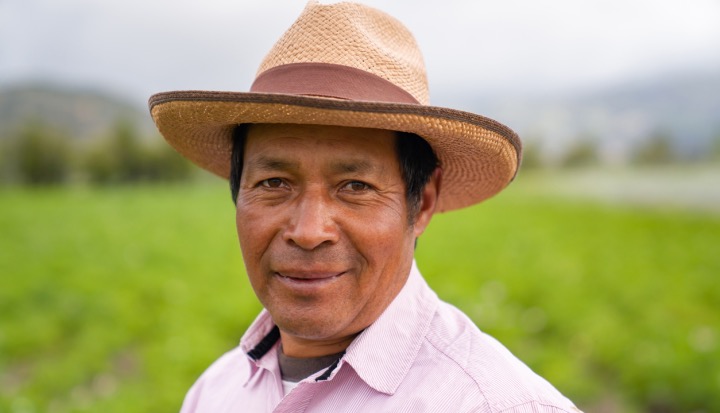Freedom Is Not Trustworthy When It Comes To The Poor, Let’s Change That With Business
There is a consensus on this capitalism and the free market are not designed to eliminate poverty. We must overcome this belief. We celebrate the capitalist economic framework for its ability to improve the lives of the majority who live under its invisible mantle, embracing new ideas, new combinations, and new leaders who innovate to create economic growth. This dynamic and often turbulent system is based on a single doctrinal truth: we believe in private ownership of the means of wealth production. However, there is a paradox between capitalism and the free market that freedom is not trusted when it comes to the poor population.
In the United States and throughout the Western world, business leaders have as much bargaining power as political leaders. We see examples of this in politics and headlines, including Amazon actively lobbying The US government on issues including taxes, trade, even immigration and defense. As we see record profits for businesses since the pandemic and the level of employment increasesthe truth is that the US and the global North continue to face rising levels of poverty. The The official poverty rate in the United States 11.5 percent (37.9 million) in 2022 and 20% of Britons In 2021, it was in poverty (13.4 million). According to the CATO Institute, The The US government at all levels spends about $1.8 trillion a year fight poverty. Although well-intentioned government institutions have not been able to eradicate poverty. I believe capitalism is the key to eradicating poverty. Businesses and corporations have the power to alleviate poverty in ways that government cannot. Moreover, I believe that it will be seen among the benefits 4.7M+ business leaders and their workers in America are worth the effort.
We currently have a top-down statist system for fighting poverty without considering that individuals and families should be empowered to take ownership of their own lives. I learned this after years of research and building Fundación Paraguaya, which began as a microfinance lending organization in 1985. I found that nobody wants to own poverty, which means nobody wants to solve it. “Poverty reduction” was the main driving force of NGOs and governments, but no one thought it could be overcome. Furthermore, no one measured it the same way, which meant that success rates were imprecise. This was published by Stanford in their latest publication in February poverty measurement research.
I discovered that listening to people about their experiences is a key first step in both accurate measurement and transformational social change. No one knows more about poverty than those who live it, and external solutions may focus on the appearance of poverty rather than its substance. Poverty is not only related to insufficient income, but also to various dimensions of deprivation. It revealed that there are deep structural and systemic causes intertwined with individual behavior and culture. To overcome multidimensional poverty, families need to be aware and consider their circumstances. At the same time, basic public services and economic opportunities must be available.
I wrote about it “Who owns poverty?” and created Poverty traffic lighta new poverty metric and training methodology for families to measure poverty levels and identify personalized strategies to address specific deprivations. I defined what non-poverty means along six dimensions – income and employment, health and environment, housing and infrastructure, education and culture, organization and participation, interior and motivation. These dimensions were translated into 50 indicators, each with three simple definitions: what it means to be extremely poor (red), poor (yellow) and non-poor (green) in the local context. Thanks to a visual survey developed with Hewlett-Packard, the categories are visualized through images so that respondents can diagnose their poverty level by selecting the image that best represents their situation. Red, yellow and green colors are used to show the “heat map” of the family. Now it is used by 850 organizations and more than 355 thousand families in 59 countries.
The Poverty Traffic Light model has been used by companies around the world to help their employees lift themselves out of poverty through Poverty Free Companies. From healthcare workers to construction companies to manufacturing plants, 200 companies have successfully implemented traffic lights. They kill two birds with one stone: to eliminate social tension and increase the productivity of human resources, increasing their profits. Win-win. In 2019, Oxford University’s Saeed Business School partnered with British multinational telecommunications company BT to find a link between happiness and productivity. employees are 13% more productive when they are happy. MetLife’s 21st Annual US Employee Benefit Trends Study (EBTS)according to recently published data, employees who feel cared for are 92% more engaged, 65% more likely to be loyal, and 56% more likely to be productive. We see similar feedback from businesses that are focused on their employees.
If we decide to fulfill our country’s commitment to the United Nations to “end poverty in all its forms” based on a democratic framework, we must look at the principles that develop here. This perspective does not neglect the structural responsibility of other actors, but seeks to emphasize the leading role of people living in poverty and business leaders as key decision makers. It involves changing existing paradigms and encouraging families and businesses to play a key role in eradicating poverty. As psychologist Albert Bandura once said, it’s about enabling and respecting people’s agency and self-efficacy so that they feel free to do what they want and achieve the goals they feel are important. That’s what capitalism is, right?

